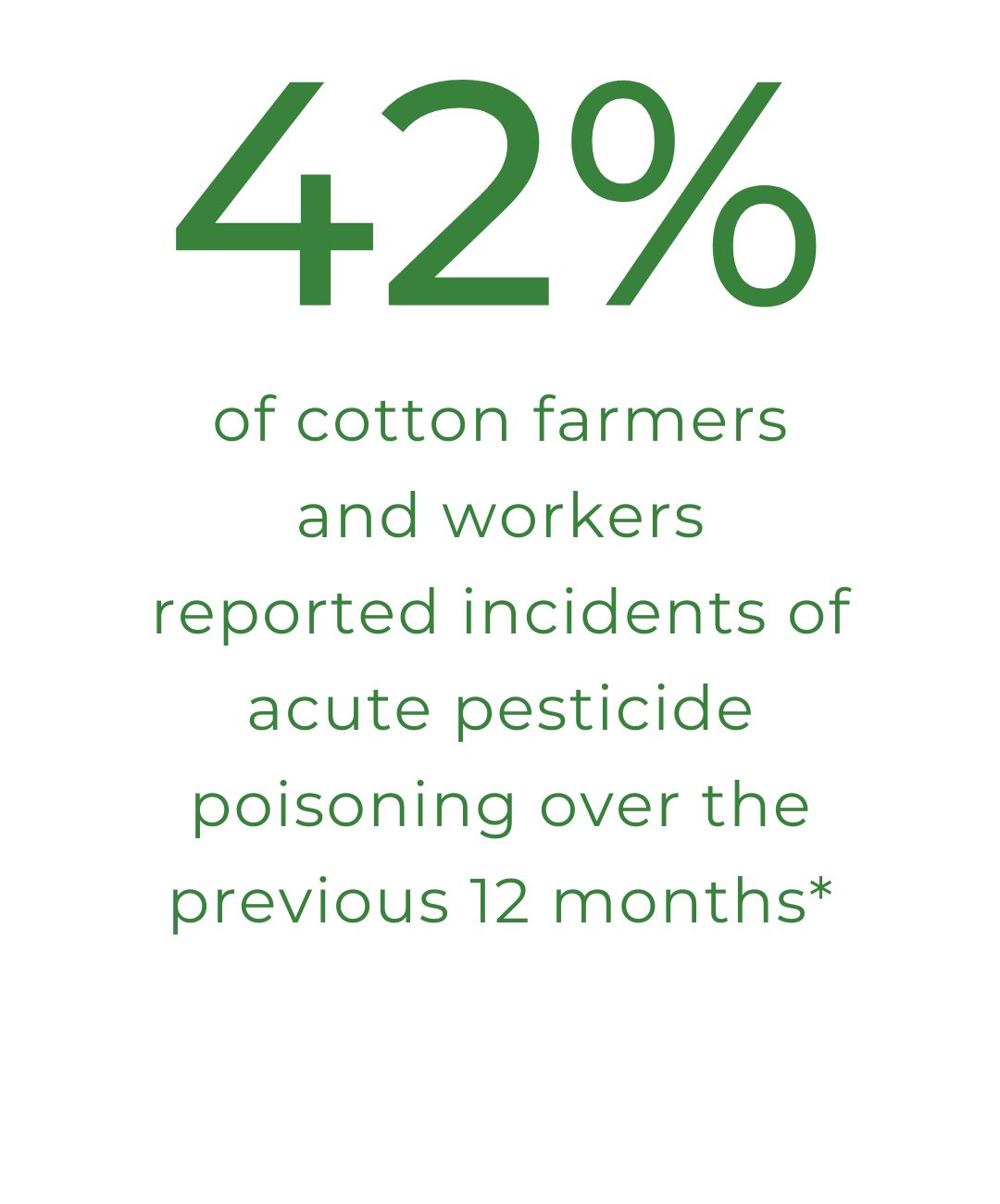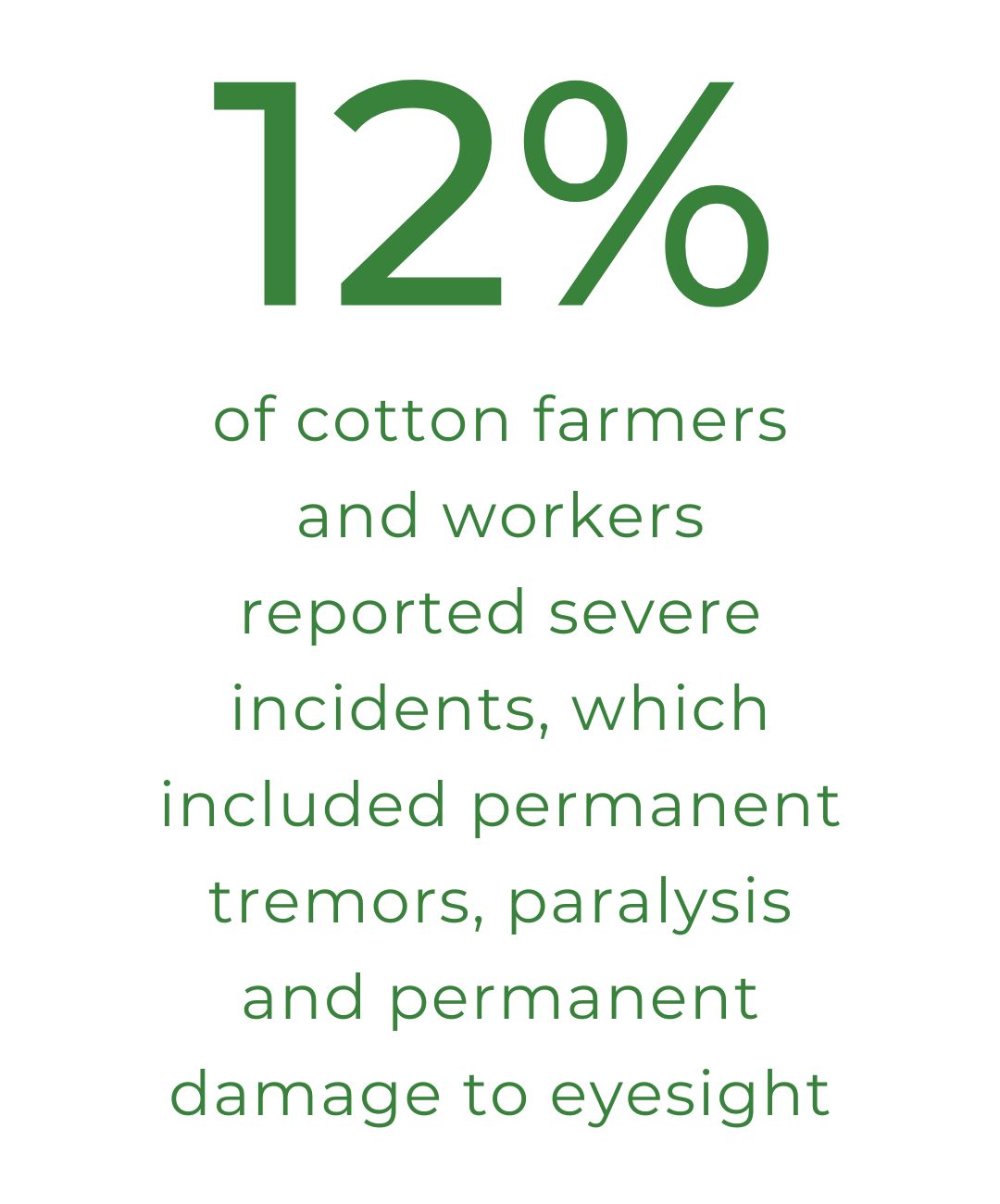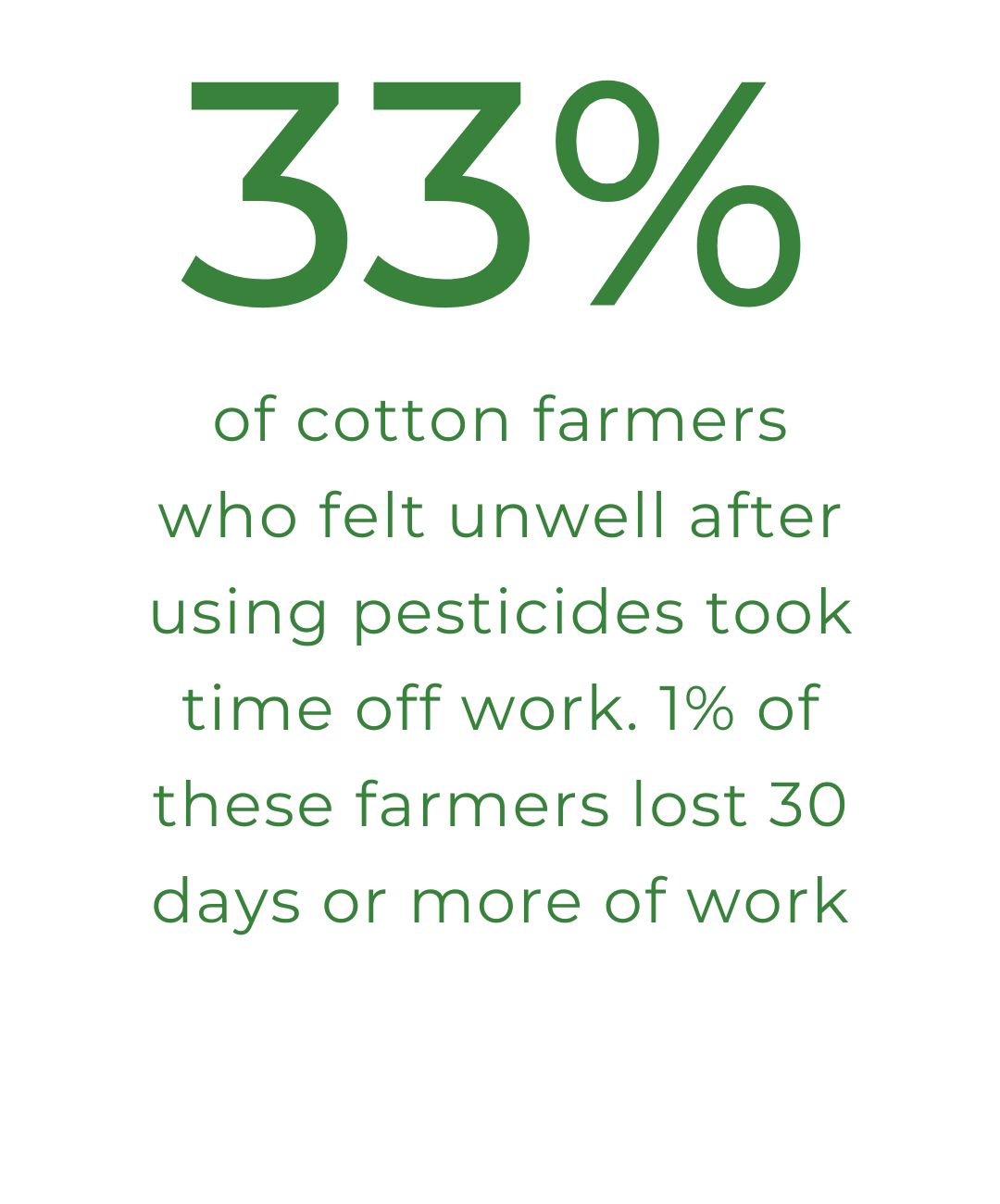Tackling pesticide poisoning in cotton
Acute, occupational pesticide poisoning is widespread among farmers and farm workers and is particularly severe among certain groups of cotton-growing farmers. Cotton is one of the most chemically intensive crops, with around 4.7% of the world’s pesticide sales used on cotton, according to the International Cotton Advisory Committee.
Also, more toxic pesticides may be registered for use in cotton compared to food crops because of fewer concerns about pesticide residues in the harvested crop. Cotton is grown in hotter regions where protective equipment is often uncomfortable and impractical. In lower income countries it is also too costly or simply not available to the majority of smallholder producers, so millions of cotton farmers worldwide are growing cotton using highly toxic pesticides with no protection. No wonder then that so many suffer from occupational poisoning.
The problem affects farmers and farm workers as well as their families. Families can be exposed when in fields or handling the sprayed crop. These toxic chemicals are frequently stored in the home and PAN hears of many incidents where children are harmed or killed due to accidental spills or ingestion of pesticides.
“In India, pesticides rank only next to road traffic accidents as the most common cause of death”
Dr Ashish Bhalla, Professor of Internal Medicine and President of the Asia-Pacific Association for Medical Toxicology (APAMI)
Tool for Mapping Acute Pesticide Poisoning (T-MAPP)
The problem of pesticide poisoning is largely invisible to supply chain actors and policy makers. Most incidents of pesticide poisoning are not officially recorded and many of those affected do not access formal health services for help. Few organisations collect information from those affected as this is difficult work, often in remote, rural areas.
In order to shed light on the real impact of pesticide poisoning on farmers, PAN UK has created a powerful new mobile app (‘T-MAPP’) to make the job of collecting such data easier and more efficient. Results from Benin, Tanzania and India already show that cotton farmers and workers are suffering shocking levels of acute pesticide poisoning, causing immense suffering with serious implications for their longer-term health and livelihoods.
Action is urgently needed.
We call on key actors in the cotton supply chain to:
- phase out Highly Hazardous Pesticides in cotton, which cause a disproportionately high number of poisoning incidents
- mobilise resources for farmer training in safer alternatives, including non-chemical alternatives, to protect human health and the environment
- monitor acute pesticide poisoning in order to measure progress and target resources effectively



